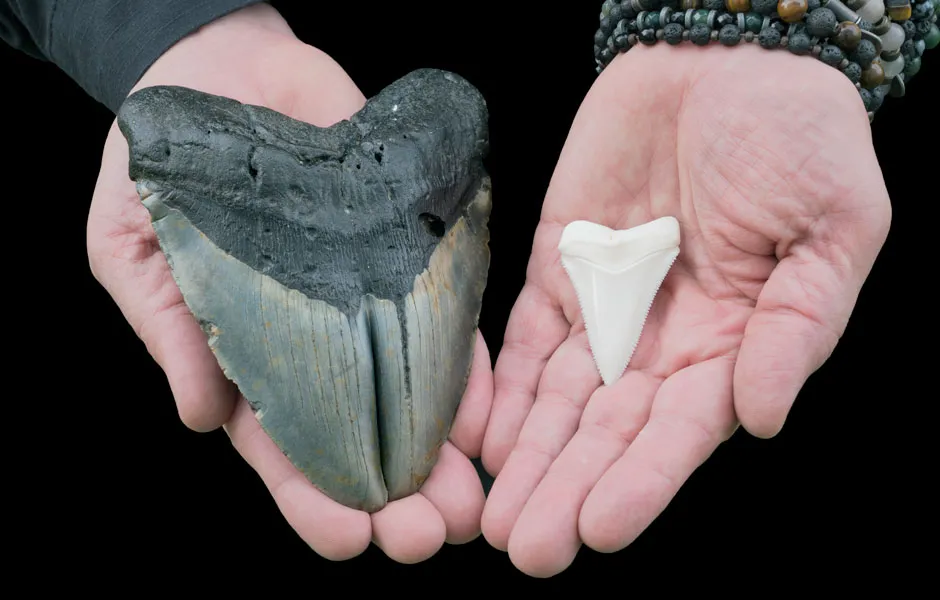Just in case you were worried megalodon sharks had too cuddly a reputation, new research suggests they practised pre-birth cannibalism.
According to a study on the extinct animals by paleaobiologists at Chicago’s DePaul University, it’s likely that embryonic megatooth sharks fed on unhatched eggs in their mother’s womb. In short, even before preying on other species in the ocean, megalodon feasted on their own unborn siblings first.
This finding was part of larger research examining the reproductive biology and growth of the shark. Using CT scanning techniques on megalodon vertebrae fossils, scientists were able to identify ‘growth bands’, similar to tree rings, that reveal how much the shark grew each year.

Not only did the megalodon’s 46 growth bands reveal the nine-metre predator died aged 46, but they also suggest the shark was a massive two metres in length at birth. That’s a baby bigger than Dwayne ‘The Rock’ Johnson.
The gigantic size of the shark at birth indicated to scientists that, just like present-day lamniform sharks, embryonic megalodons fed on eggs in the womb. The researchers believe this (downright grim) form of cannibalism, known as oophagy, was needed to birth sharks already big enough to compete with fellow predators.
Read more about sharks
- Megalodon shark was an absolute unit, scientists confirm
- What is a goblin shark?
- The world’s biggest fish are female
"As one of the largest carnivores that ever existed on Earth, deciphering such growth parameters of the megalodon is critical to understanding the role large carnivores play in the context of the evolution of marine ecosystems," said Professor Kenshu Shimada, lead author of the study.
Megalodon sharks, which lived worldwide roughly 15 to 3.6 million years ago, reached at least 15 metres in length. Although a lot smaller than the giant megalodon that tried to eat Jason Statham in Hollywood blockbuster The Meg, this still means this fish was at least three times the length of today’s average great white shark.
Top of its food chain, it’s estimated that the megalodon had a jaw spanning 2.7 by 3.4 metres wide, big enough to fit two adult humans.
The mega sharks are now extinct, theorised to have been killed off when Earth entered a phase of global cooling. However, the reason behind the megalodon’s demise is yet to be confirmed.
Reader Q&A: How do sharks smell blood underwater?
Asked by: Todd Michael Wilson, USA
When you smell something in the air, it’s because scent molecules have dissolved into the wet lining of your nose. Smelling underwater is no different, except that the molecules are already dissolved in the seawater. It’s a myth that sharks can smell a single drop of blood from a mile away.
Sharks actually have roughly the same sensitivity as other fish and can detect smells at between one part per 25 million and one part per 10 billion, depending on the chemical, and the species of shark. At the top end, that’s about one drop of blood in a small swimming pool.
Read more:
